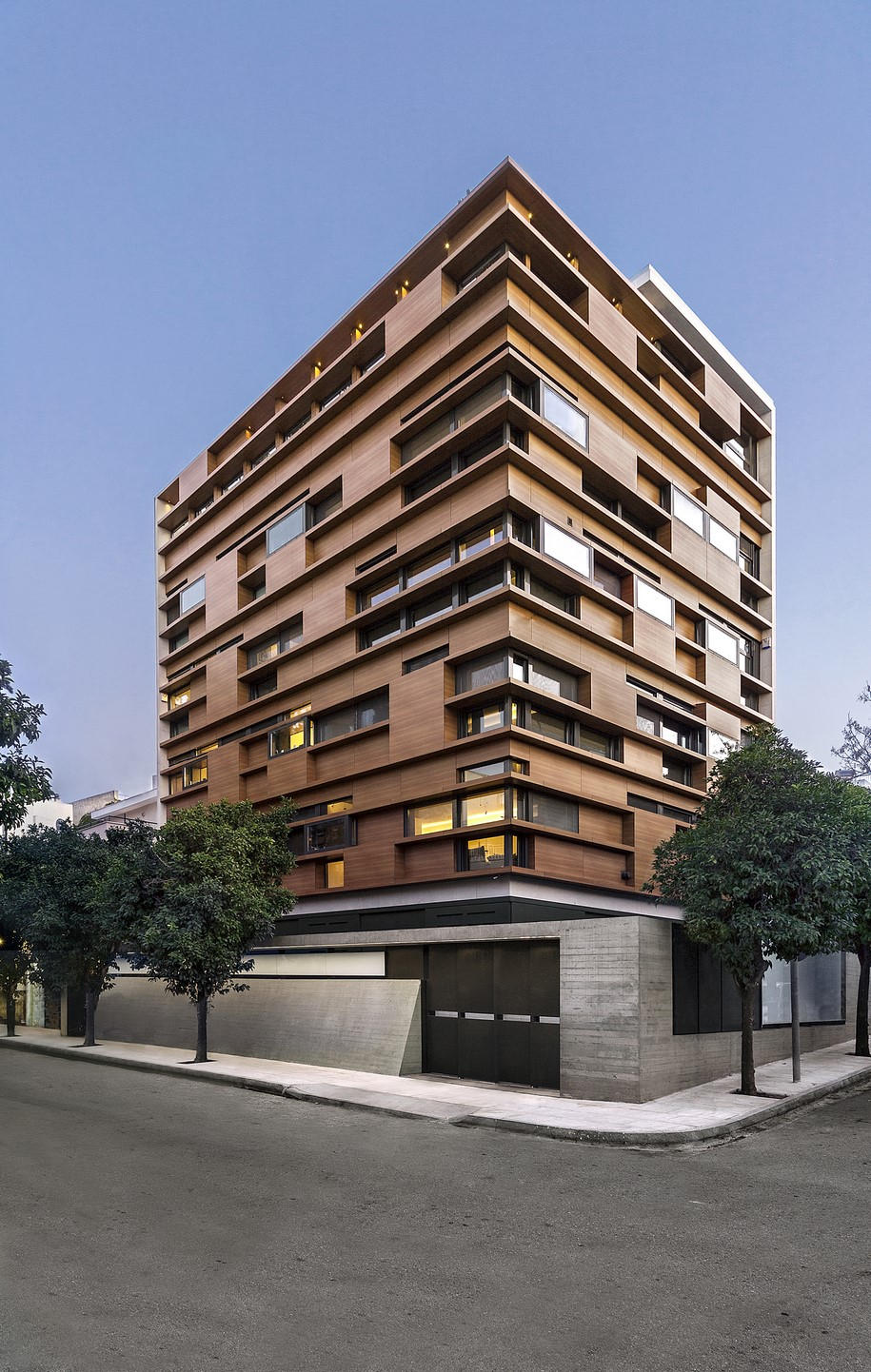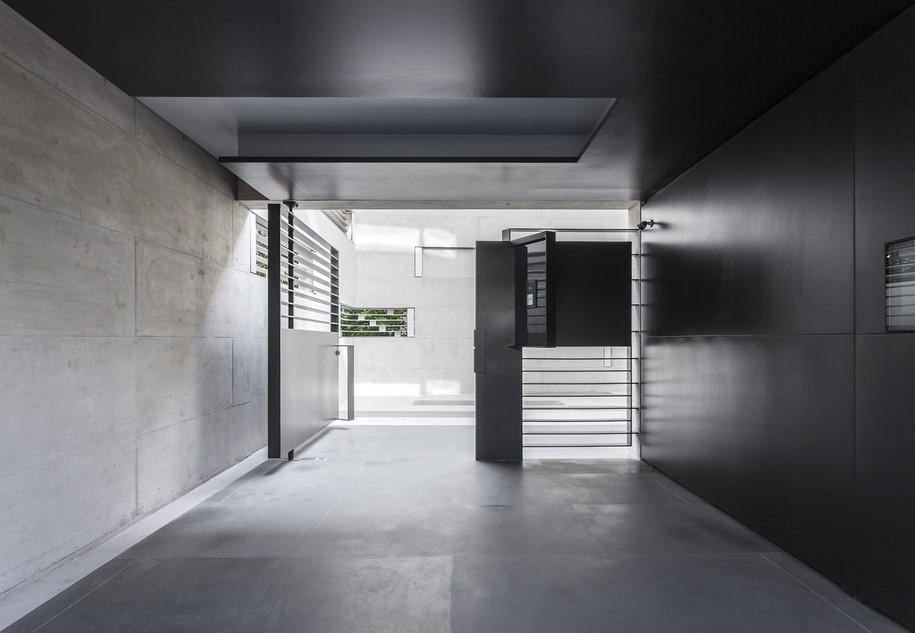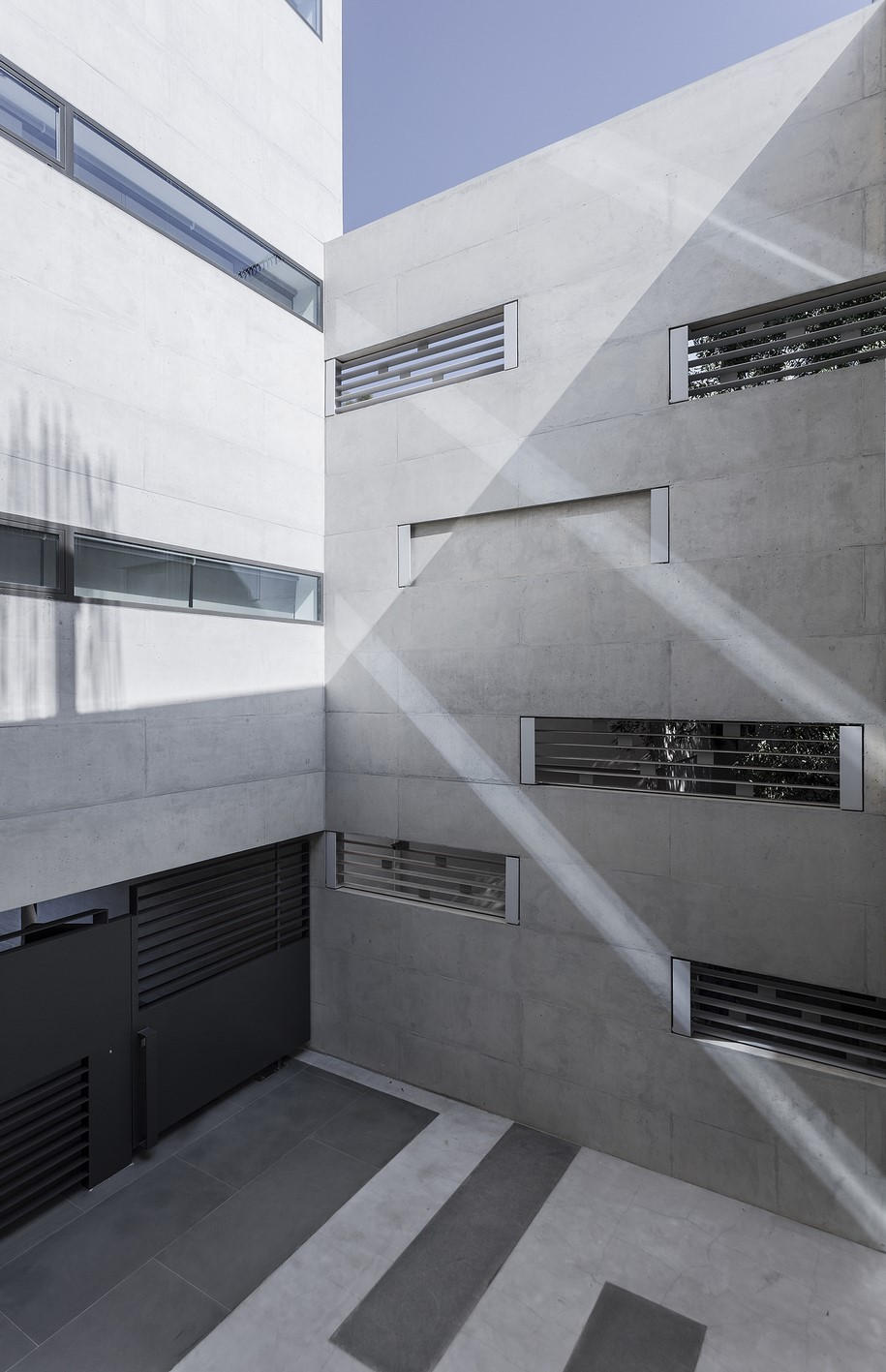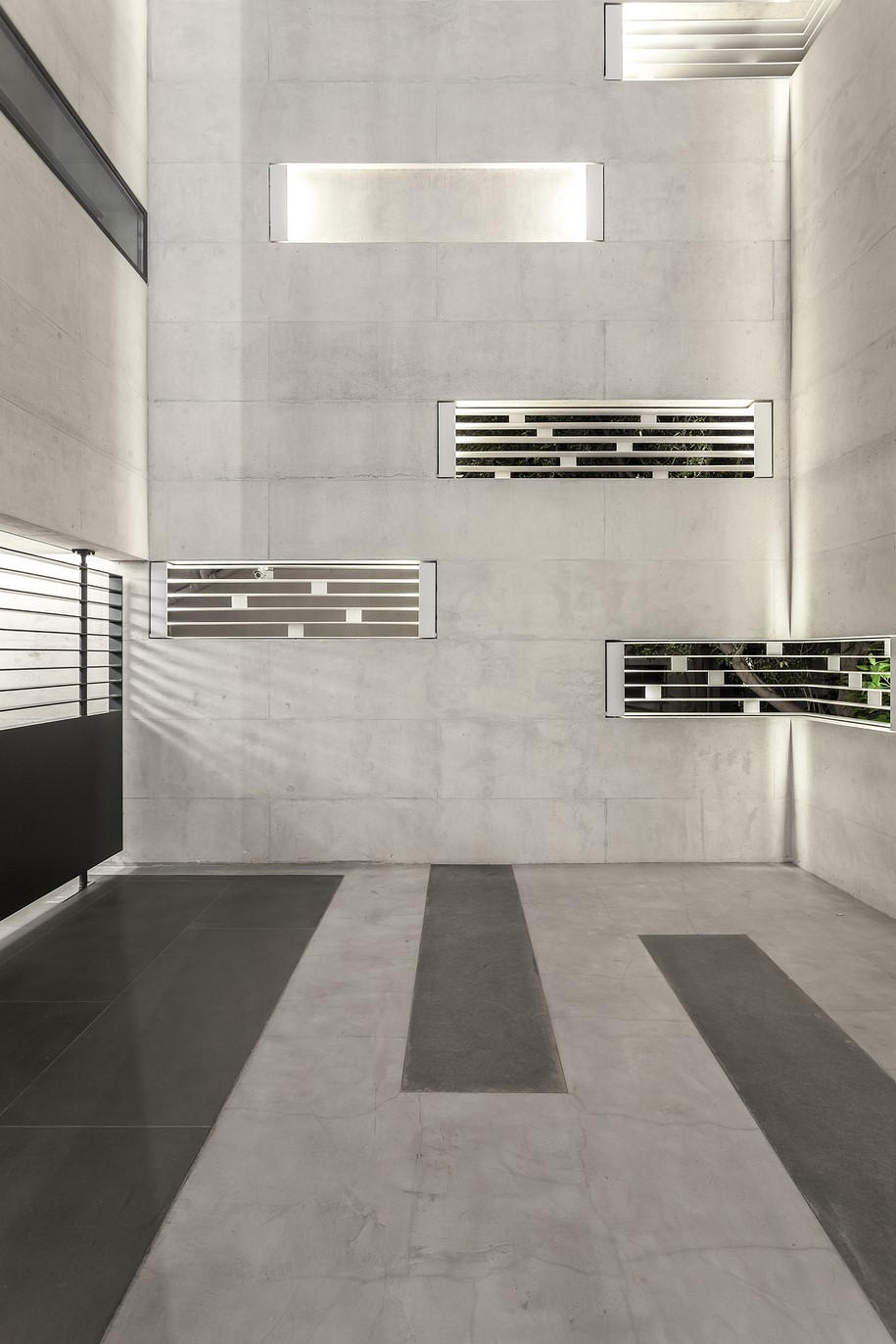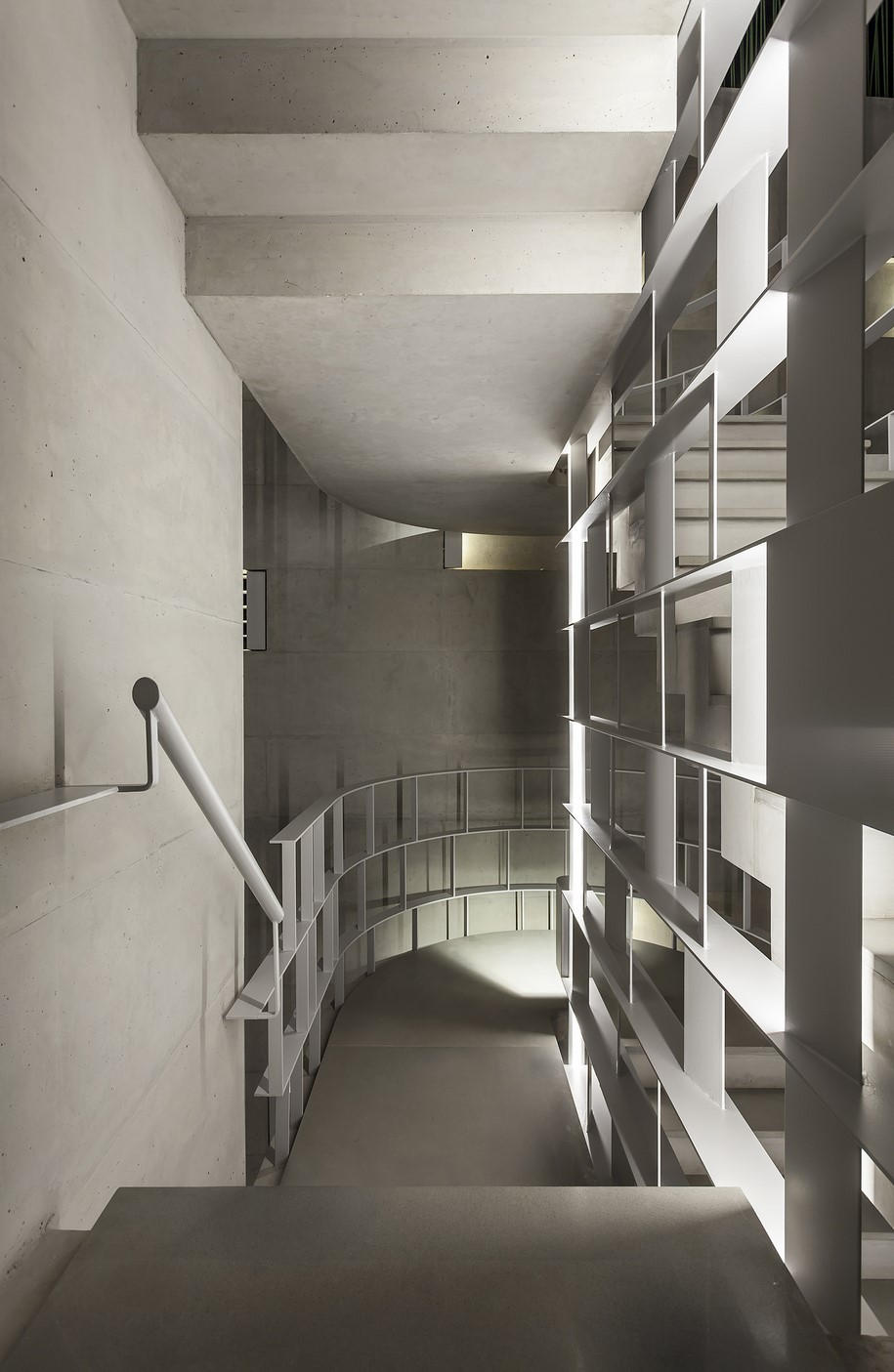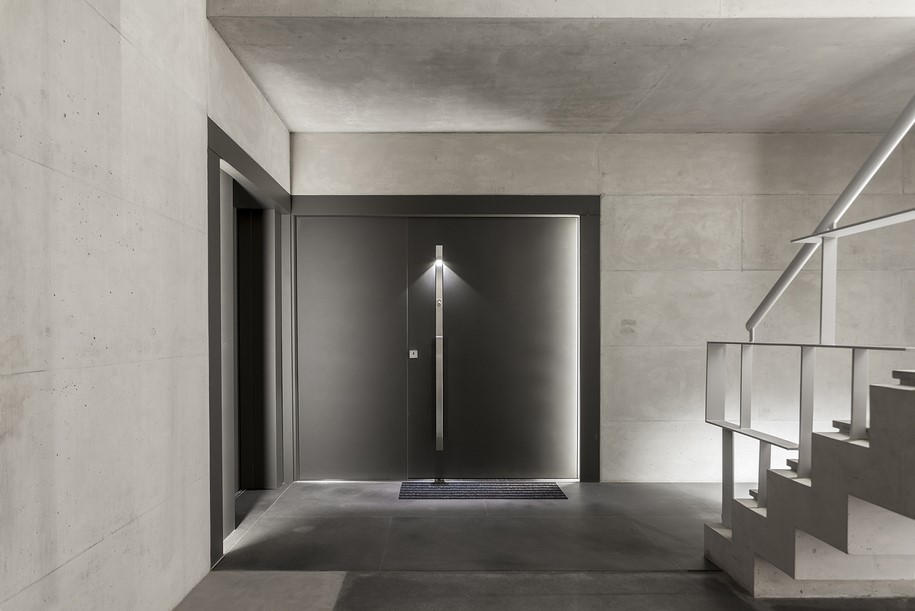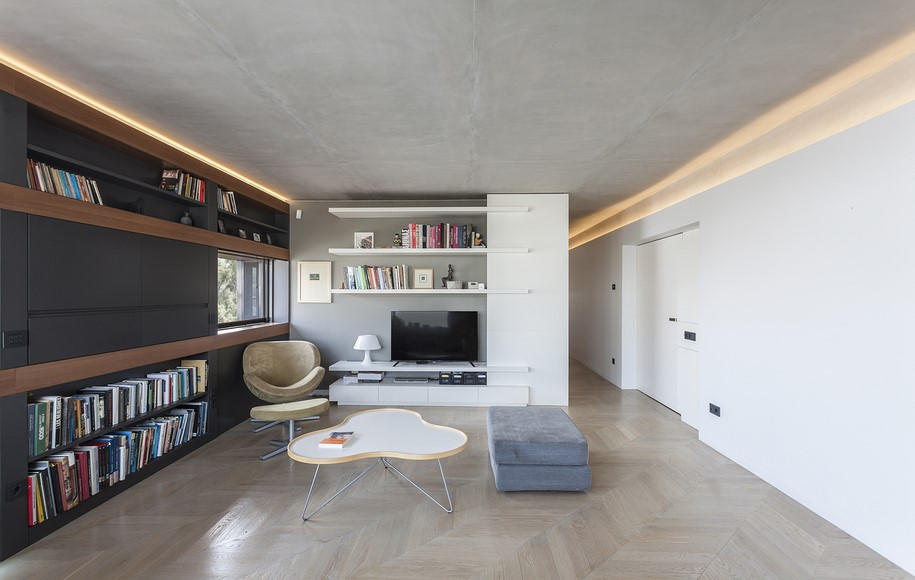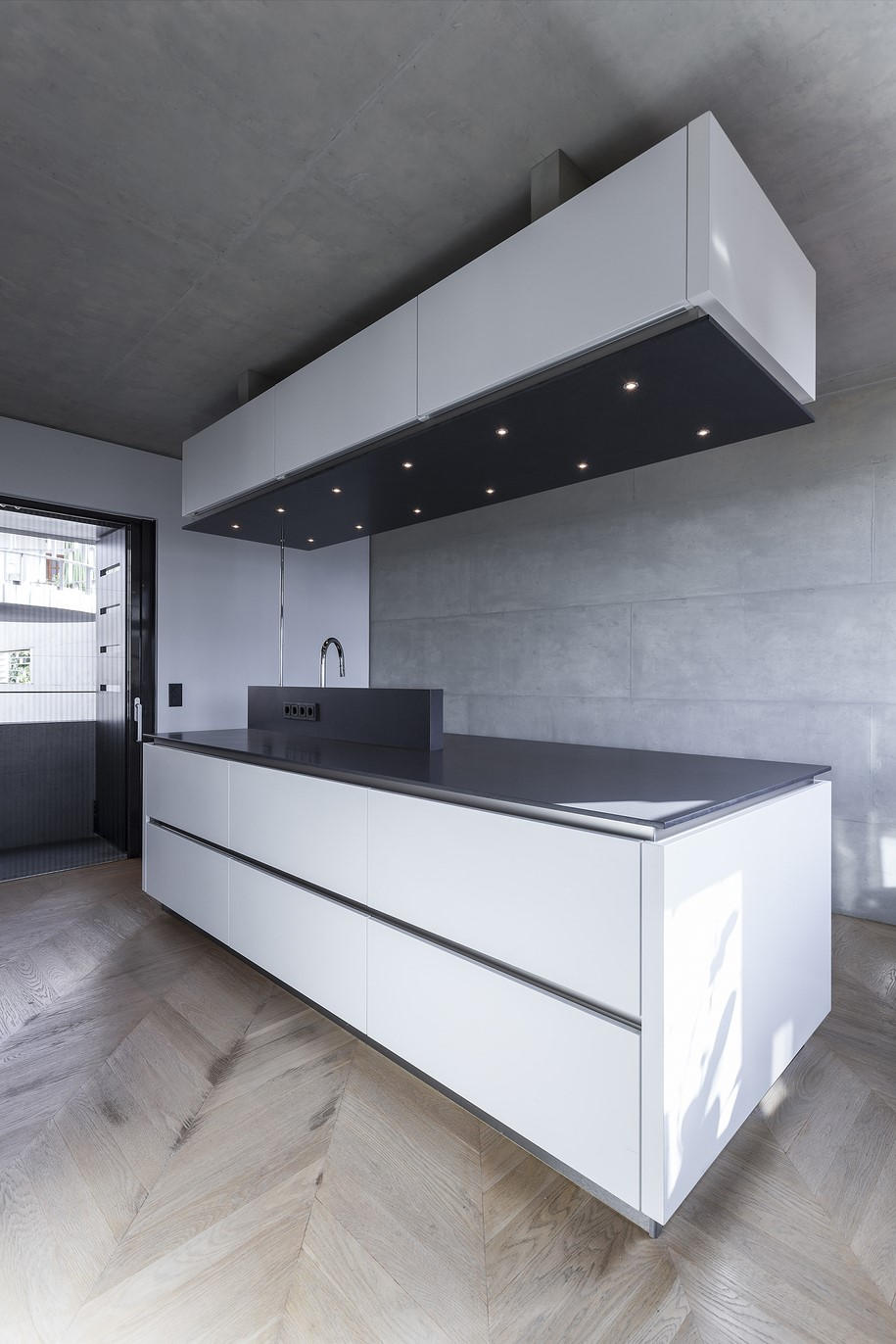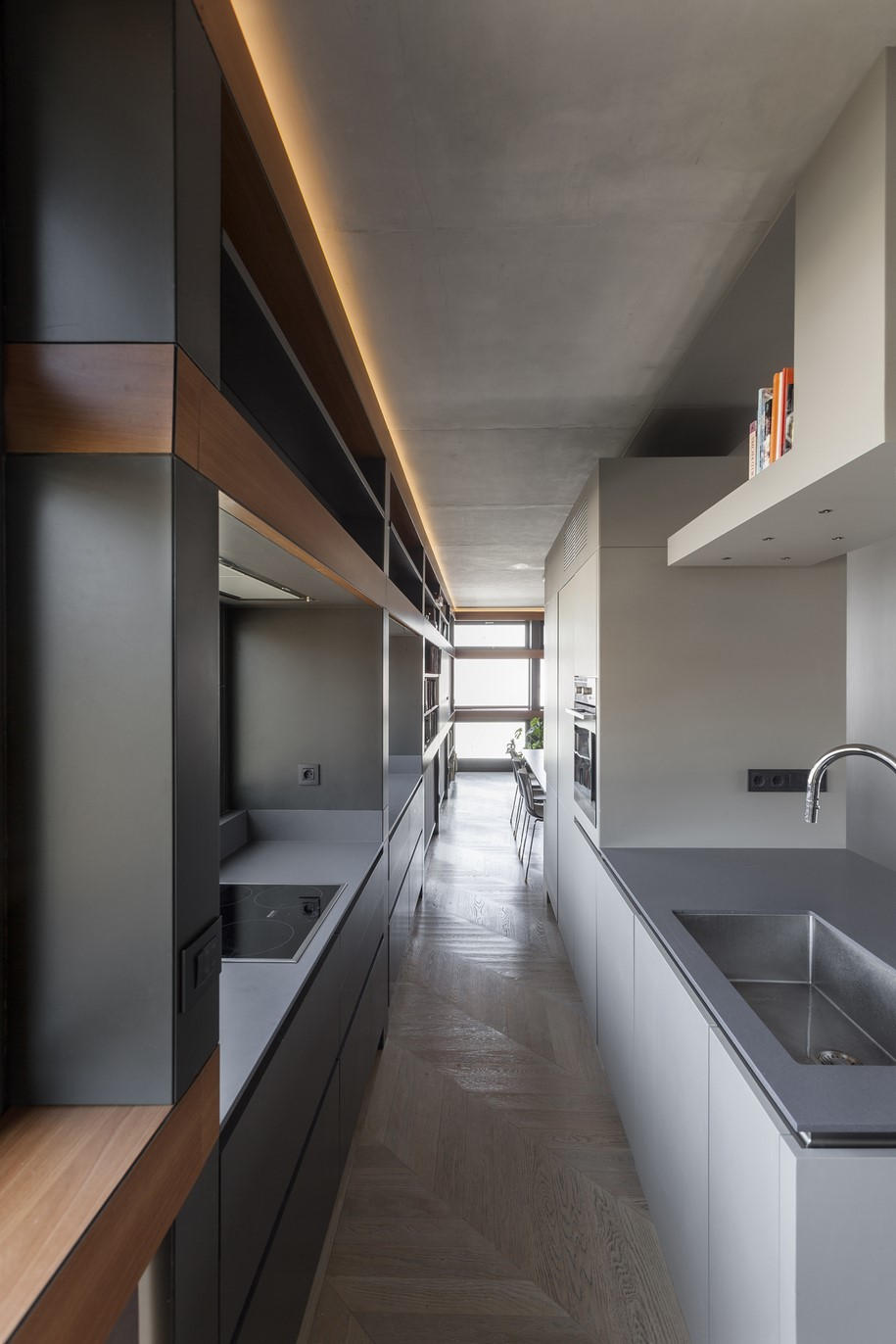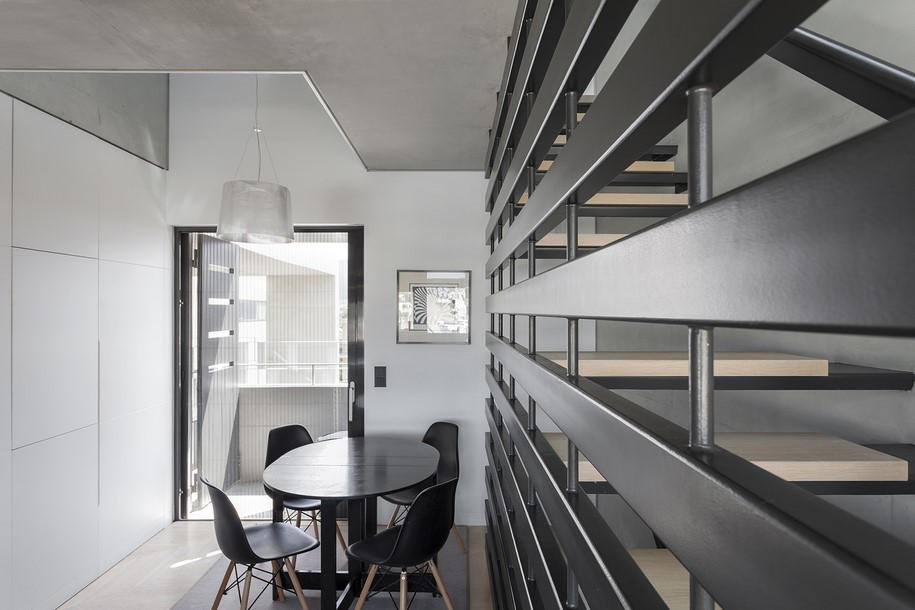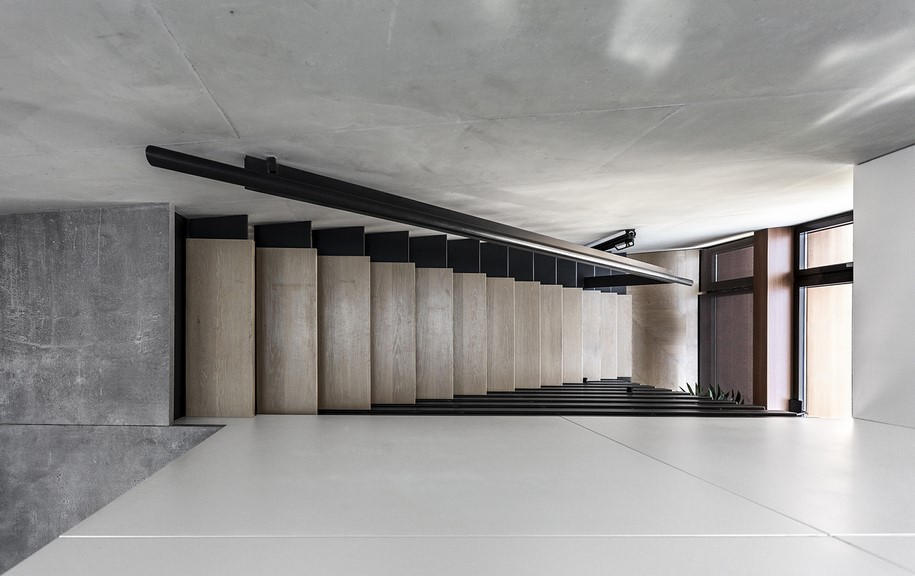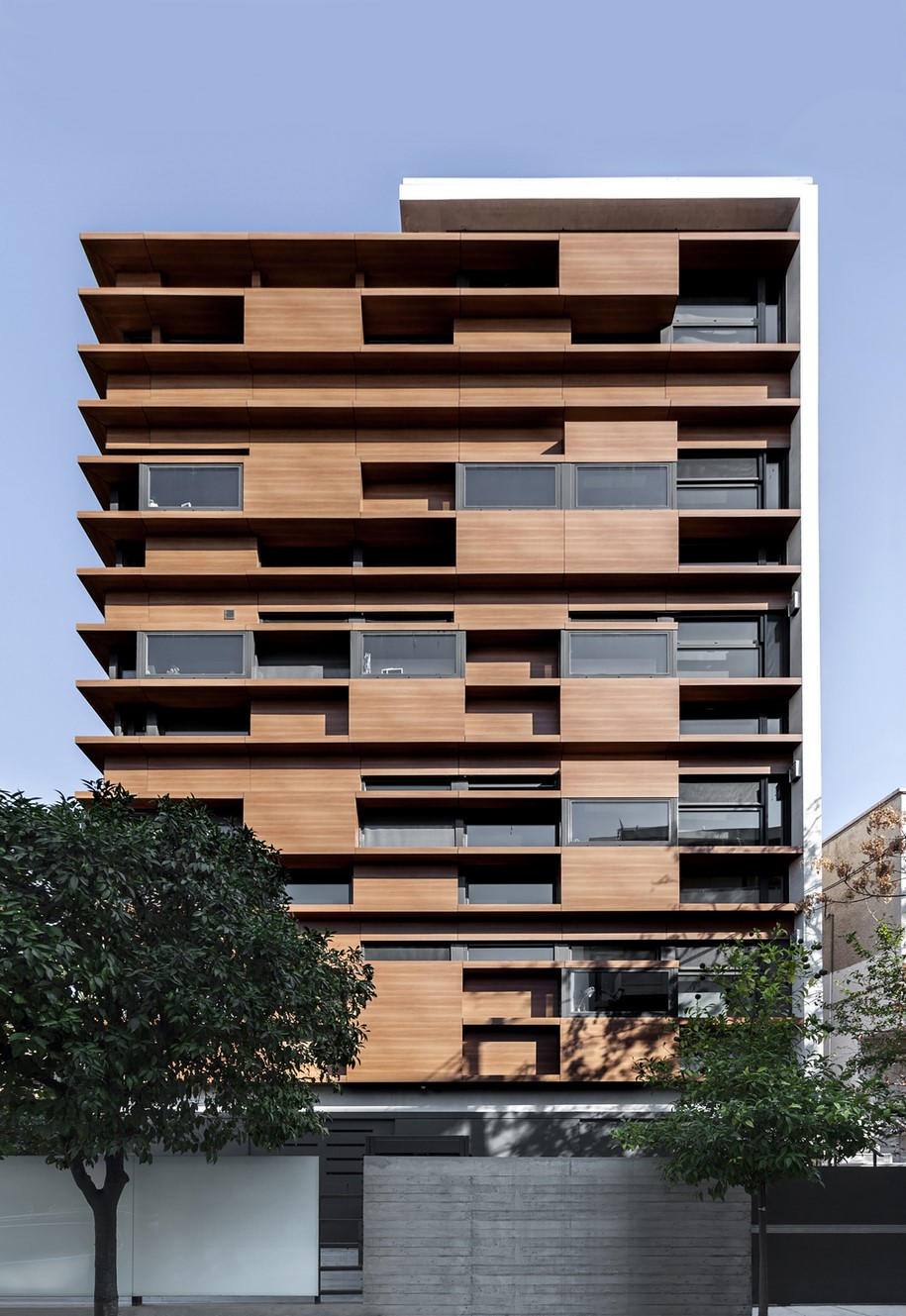The building, designed by Nikos Ktenàs Architecture, through its structure, deals with the reinvention of the typology of the ‘polykatoia’ – block of flats, where the unoccupied space of the lot, is proposed as an open air central entry hall, as well as a transitional space between the city and the living quarters.
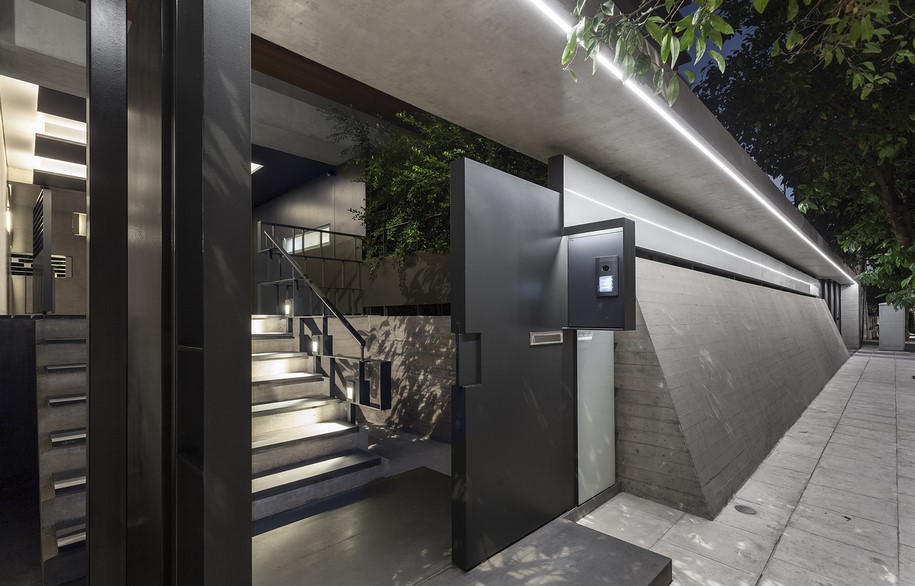
It is a stop, but at the same time a point of variation of the visitor’s course, from horizontal to vertical, from public to private. This interpretation of the unoccupied space of the urban building block gives it a substantial and inseparable spatial function in the building, in the classical sense that of the atrium where, through this space, the visitor enters the living spaces that surround it, which in turn, are projected towards the city, completing the exterior of the building block.
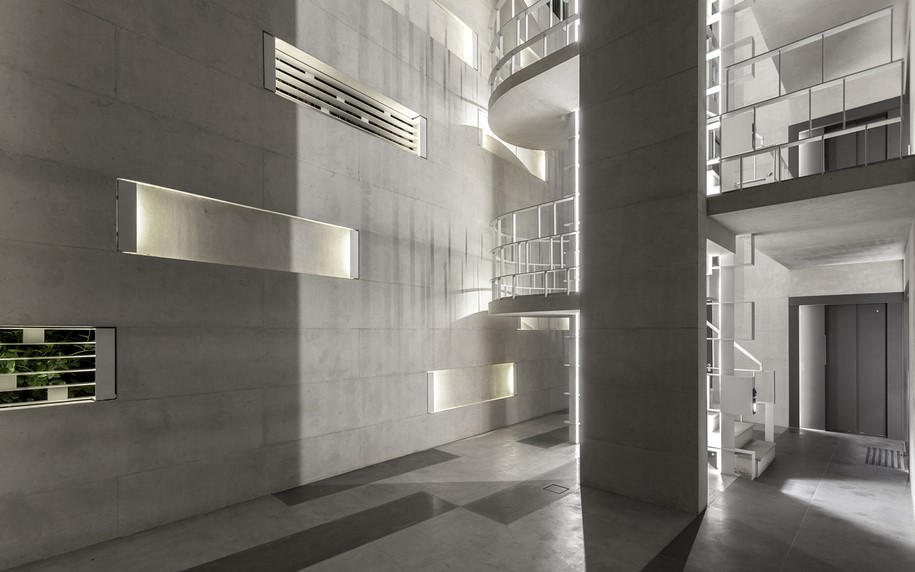
The bearing structure of the building is consequently of reinforced concrete, which surrounds the aforementioned central space of the atrium, while at the same time it carries the floor slabs in the form of cantilevers. This structure allows maximum freedom in the layout of the floor plans of the dwellings as well as the exterior facades of the building. The latter, self-supported are proposed as a “sculptured skin”, which contains some of the vital functions of the dwellings, with positive and negative volumes, projections and fully opening glass panes, making the total volume of the building monolithic and at the same time transparent, while from the indoors, its configuration permits framing of the immediate urban built environment and surrounding landscape.
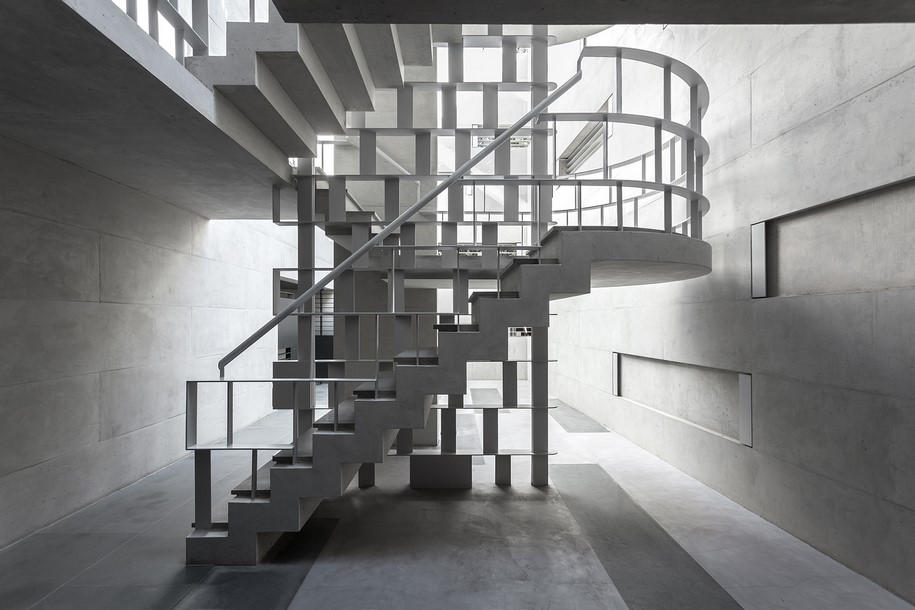
Finally, the last level of the building is proposed as a “suspended garden”, which is surrounded towards the internal of the building block, by solid reinforced concrete wall, while externally towards the city, it is defined by the self-supported external façade structure of the building. As a consequence, at this level of the building, the dialectic relationship of the two basic structural elements of the building allows the inhabitants of this open space, to re-orient themselves in relation to the urban and the geographical context in which it is located.
Facts & Credits:
Architectural Design / Supervision: Nikos Ktenàs_Nikos Ktenàs Architecture
Supervision of Construction and Project Implementation:Nikos Ktenàs_Nikos Ktenàs Architecture
Interior Design: AVW Architecture_Katerina Vassilakou¬
Structural Design: Cubus Hellas Ltd- Antonis Kanellopoulos
Mechanical Study: LDK Consultants-Dimitris Kirimlidis
Lighting Consultants: Simple Lights
Photography: Mariana Bisti
Το κτίριο μέσω της δομής του, πραγματεύεται την επανεφεύρεση της τυπολογίας της πολυκατοικίας όπου ο ακάλυπτος χώρος προτείνεται ως κεντρικός χώρος εισόδου, καθώς και ως μεταβατικός χώρος μεταξύ της πόλης και των χώρων διαβίωσης. Συνιστά μια στάση, αλλά ταυτόχρονα και ένα σημείο αλλαγής της πορείας του επισκέπτη, από οριζόντια σε κάθετη, από τον δημόσιο προς τον ιδιωτικό χώρο.
Η ερμηνεία αυτή του ακάλυπτου χώρου του αστικού οικοδομικού τετραγώνου, του προσδίδει μια ουσιαστική και αναπόσπαστη στο κτίριο χωρική λειτουργία, αποδίδοντας του εν μέρει την κλασσική υπόσταση του αίθριου, όπου εν μέσω του χώρου αυτού, ο επισκέπτης εισέρχεται στους χώρους διαβίωσης οι οποίοι τον περιβάλλουν, και οι οποίοι με τη σειρά τους, προβάλλονται προς την πόλη, συμπληρώνοντας την εξωτερική όψη του οικοδομικού τετραγώνου.
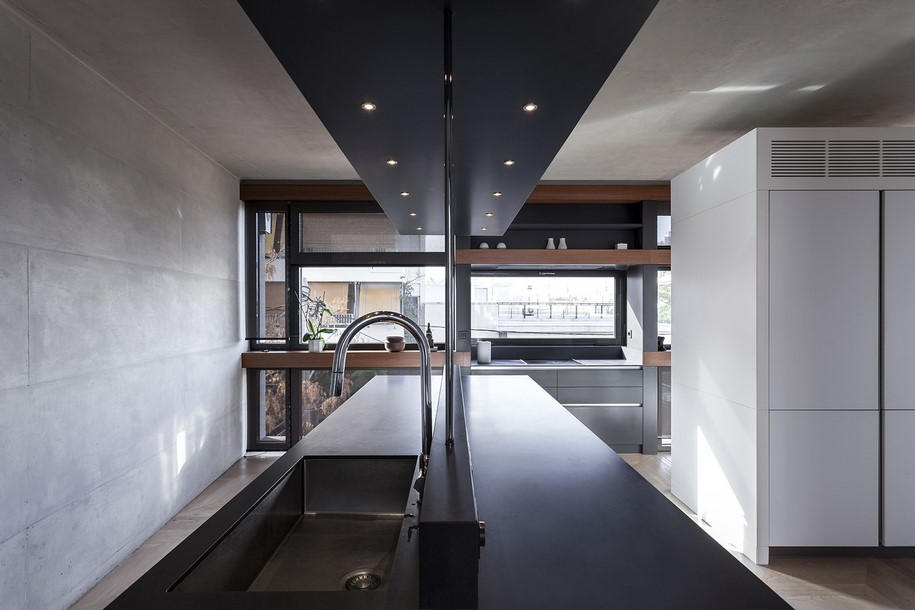
Η φέρουσα δομή κατά συνέπεια του κτιρίου, είναι από εμφανές οπλισμένο σκυρόδεμα, περιβάλει αποκλειστικά, το προαναφερθέν κεντρικό χώρο του αιθρίου, ενώ ταυτόχρονα φέρει τις πλάκες των ορόφων εν είδη προβόλων. Η δομή αυτή επιτρέπει τη μέγιστη ελευθερία στην διαμόρφωση των κατόψεων των κατοικιών, καθώς και των εξωτερικών όψεων του κτιρίου. Οι τελευταίες, αυτοφερόμενες, προτείνονται ως μία ‘σμιλευμένη επιδερμίδα’, η οποία εμπεριέχει κάποιες από τις ζωτικές λειτουργίες των κατοικιών, με θετικούς και αρνητικούς όγκους, έρκερ και πλήρως ανοιγόμενα υαλοστάσια, καθιστώντας τον συνολικό όγκου του κτιρίου μονολιθικό αλλά ταυτόχρονα διαφανή, ενώ από τους εσωτερικούς χώρους, πλαισιώνει αποσπασματικά το άμεσο αστικό περιβάλλον.
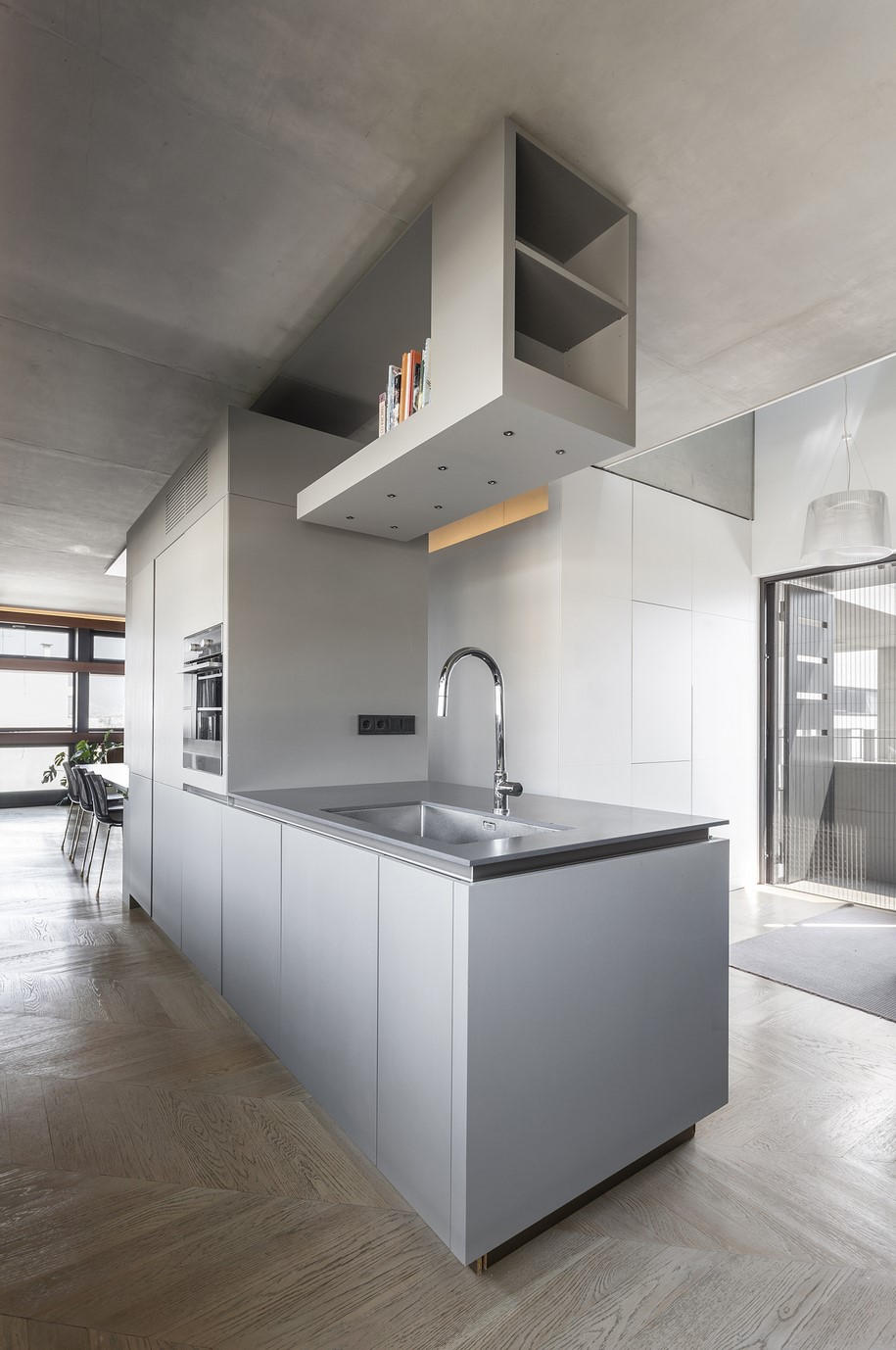
Τέλος, το τελευταίο επίπεδο του κτιρίου, προτείνεται ως ένας ‘κρεμαστός κήπος’, ο οποίος περιβάλλεται προς το εσωτερικό του οικοδομικού τετραγώνου, από ένα συνεχόμενο συμπαγές τοιχίο εμφανούς οπλισμένου σκυροδέματος, ενώ εξωτερικά προς την πόλη, από την κατάληξη της αυτοφερόμενης όψης του συνόλου. Συνεπώς, στο επίπεδο αυτό, η διαλεκτική σχέση των δύο βασικών αυτών δομικών συντελεστών του κτιρίου, επιτρέπει στους επισκέπτες του ανοιχτού αυτού δωματίου, έναν εκ νέου προσανατολισμό της θέσης του κτιρίου σε σχέση με το αστικό σύνολο στο οποίο βρίσκεται.
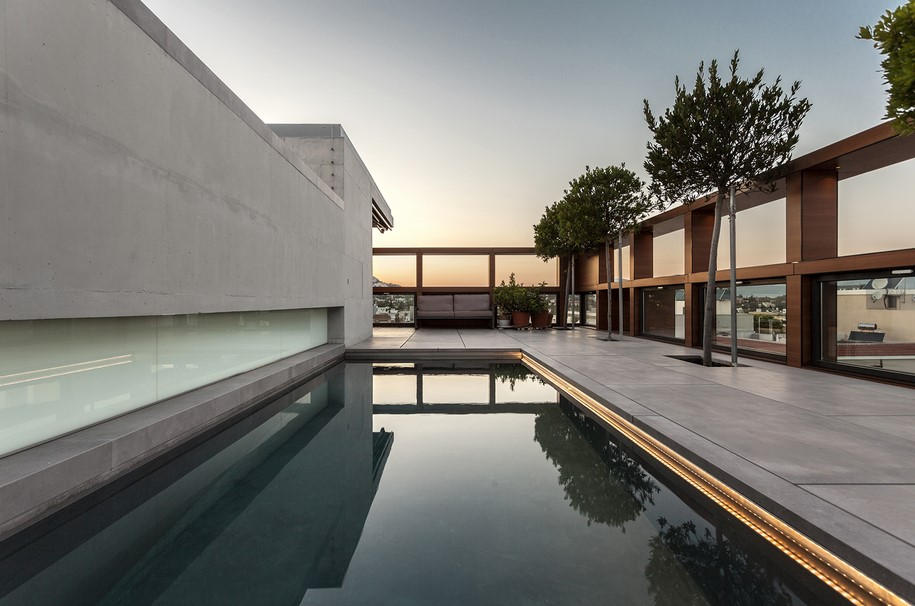




Στοιχεία Έργου:
Αρχιτεκτονική Μελέτη/ Επίβλεψη:Νίκος Κτενάς_Nikos Ktenàs Architecture
Επίβλεψη Κατασκευής και Υλοποίηση Έργου: Νίκος Κτενάς_Nikos Ktenàs Architecture
Αρχιτεκτονική Εσωτερικού Χώρου: Κατερίνα Βασιλάκου_AVW Architecture
Στατική μελέτη: Cubus Hellas Ltd- Δρ. Αντώνης Κανελλόπουλος
Μηχανολογική μελέτη: LDK Consultants-Δημήτρης Κιριμλίδης
Σύμβουλοι Φωτισμού: Simple Lights
Φωτογραφίες: Mariana Bisti
Προμηθευτές:
Μαρμάρινες Επιστρώσεις Δαπέδων – Corian: Serpetinis
Κουφώματα: SIAS S.A
Ξυλουργικά: EPEXYL
Όψεις: MIPECO Trading Ltd
Εργασίες Ξηράς Δόμησης: MAXEN- Ανδρέας Παπαδέλλης
Θωρακισμένες Πόρτες και Επενδύσεις Εισόδων: Golden Door
Το έργο Inside-Out τιμήθηκε με το Βραβείο Αρχιτεκτονικής 2013-2017 του Ελληνικού Ινστιτούτου Αρχιτεκτονικής.
READ ALSO: Tabanlıoğlu Architects renovate Beyazit Public Library in Istanbul
